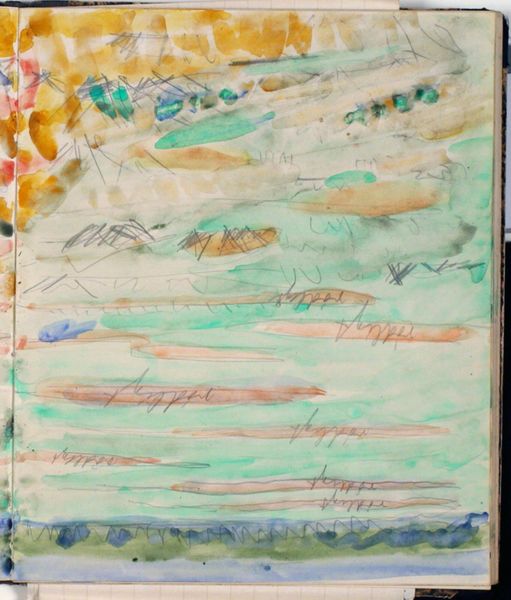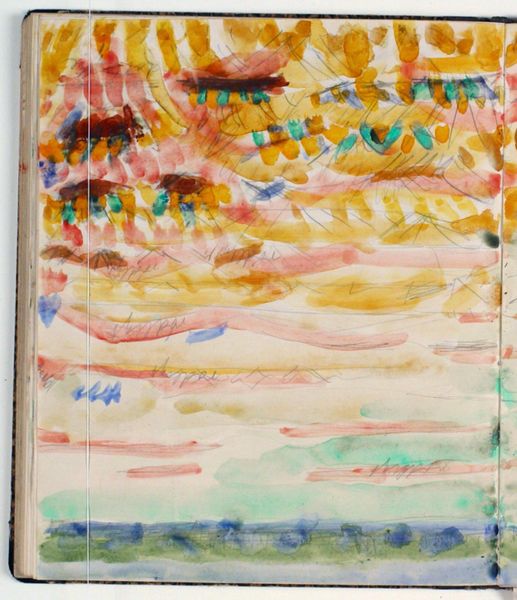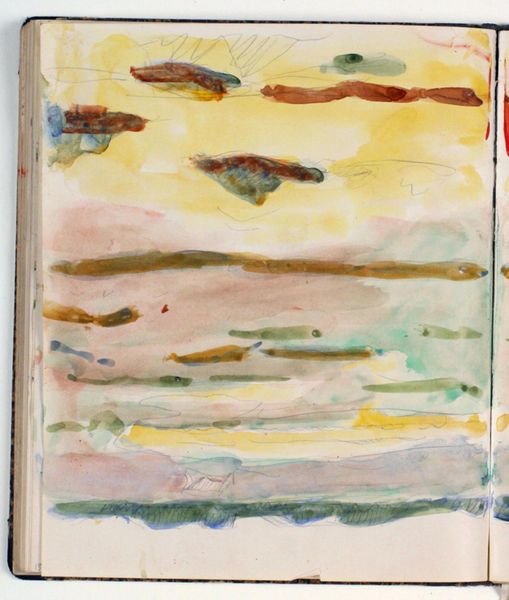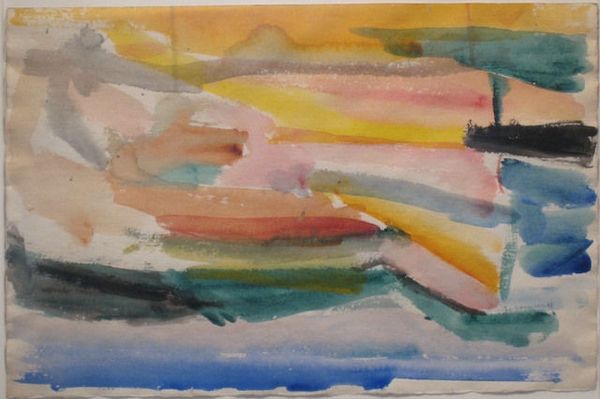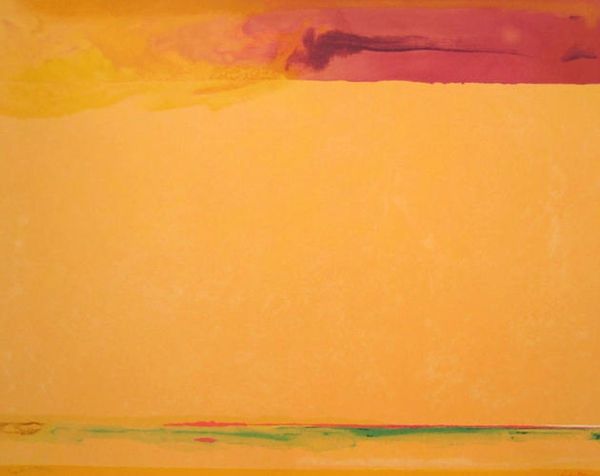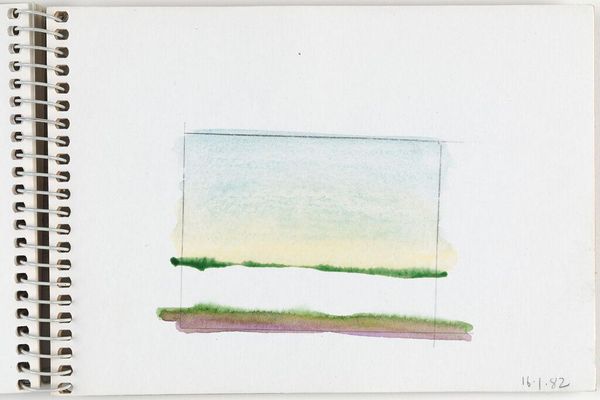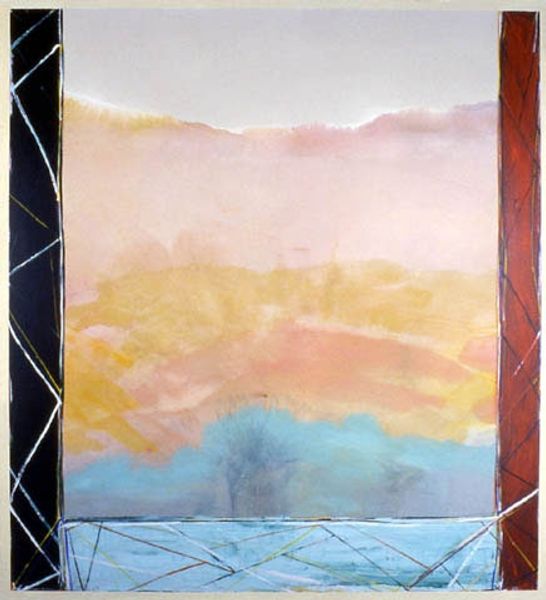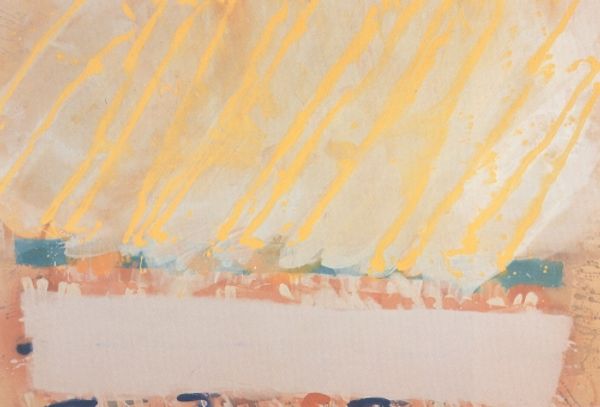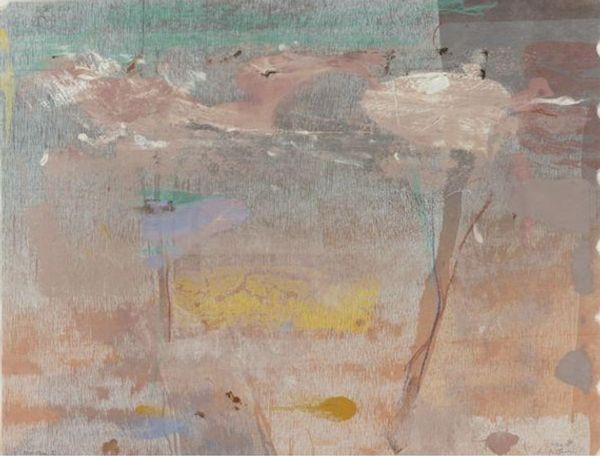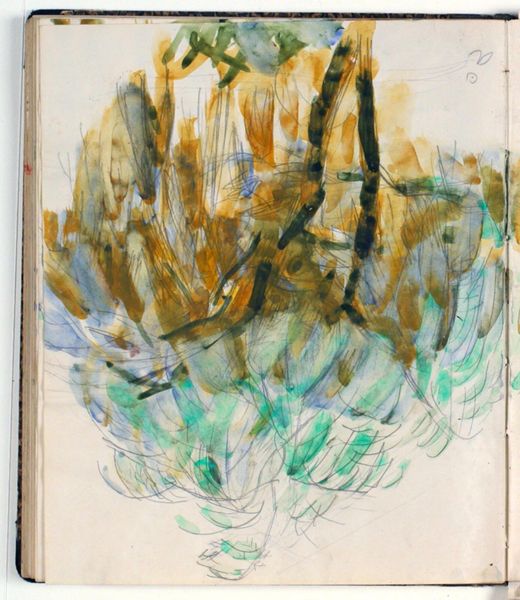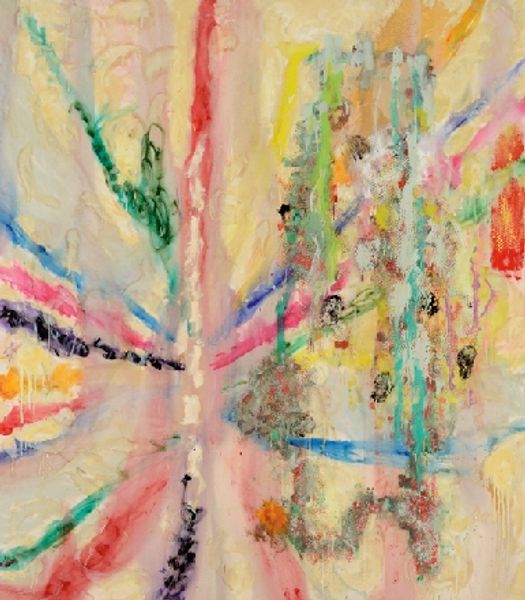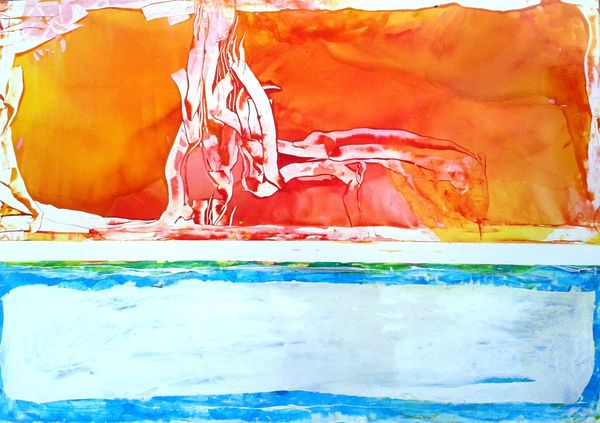
drawing, plein-air, watercolor
#
drawing
#
plein-air
#
landscape
#
watercolor
Dimensions: 226 mm (height) x 185 mm (width) x 112 mm (depth) (monteringsmaal), 221 mm (height) x 184 mm (width) (bladmaal)
Curator: Here we have Niels Larsen Stevns’s "Landskabsstudie," a watercolor drawing done en plein-air between 1930 and 1936. Editor: It’s so simple, almost like a child’s drawing. The loose watercolor washes create such a gentle, airy feeling. You can almost feel the breeze across the landscape. Curator: Stevns, known for his spiritual and monumental works, seems to have used this study to capture a fleeting moment in nature. It’s interesting to see him working so informally. Perhaps for study. It would be worthwhile researching if this style impacted his approach to mural work later in his career. Editor: Absolutely. It's as though he's trying to internalize the essence of the place. You see the loose rendering of shapes and colours which forgoes rigid lines, making it so dreamlike. It challenges our ideas around gendered historical connotations, and questions what’s really represented. The land, or lived experiences. Curator: That interpretation brings to mind ideas about representation in Danish landscape painting from the interwar period. One can also see in his contemporaries this simplified aesthetic used across social documentary work, which, whilst rendered simply, served as a poignant commentary on poverty. Editor: The almost haphazard nature adds a layer of accessibility. Does art need to be hyper-realistic to convey meaning, or a message? Here, in this loose application, maybe the landscape provides that symbolism and invites discourse from marginalised groups about their social identity. Curator: Well, the informality of it certainly makes the study appealing. It allows for speculation on the artist’s process, too, without being bound by an assumption of perfection or overworking. Editor: Precisely. It’s this idea of art and accessibility, which encourages broader social commentary around its historical context and cultural impact. Curator: Yes, and in art history, that's what brings a study like this alive, even now. Editor: For me too – an approach of open, contextual discussion with all identities in mind. It brings an added element of humanity, that stays long after the analysis has ended.
Comments
No comments
Be the first to comment and join the conversation on the ultimate creative platform.
